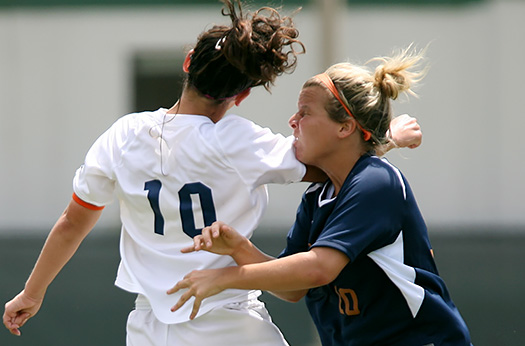Apr 25, 2024Make baseline testing a requirement to help prevent concussions
Take every bit of technology, every ounce of knowledge, and enact every piece of legislation. You’re still not going to prevent concussions.
That doesn’t mean we should stop trying to diminish the number of head injuries each year. If equipment takes even the smallest step in preventing concussions or head injuries, then it’s worth it. But at the same time, it’s imperative that we are proactive and do all we can to prevent concussions from becoming a life-long struggle with cognitive functioning that can end in tragedy.
ImPACT (Immediate Post-Concussion Assessment and Cognitive Testing) is becoming more prevalent with sports programs, but until this type of test becomes a staple in our schools, we’re failing to fully protect student-athletes. Licensed athletic trainers, like Jon Finiak at Whitnall High School (Wis.), say ImPACT is a valuable tool in gauging an athlete’s recovery status, so why aren’t more schools taking advantage of it?
 “It’s incredibly helpful,” Finiak says. “An athlete can suffer a concussion and they get the headache and the dizziness, but you don’t know how the inner workings of the brain are. Those side effects can go away but they still might struggle in school, and that’s a red flag that they’re not ready to return.”
“It’s incredibly helpful,” Finiak says. “An athlete can suffer a concussion and they get the headache and the dizziness, but you don’t know how the inner workings of the brain are. Those side effects can go away but they still might struggle in school, and that’s a red flag that they’re not ready to return.”
Some schools say it’s the cost, but ImPACT isn’t as expensive as you may think. A school can purchase 300 baseline tests with 90 post-injury examinations for $500. Depending on participation in your sports programs, that can be as little as $2 per athlete.
Another argument is whether they are reliable. Some coaches expressed concern that athletes purposely “sandbag” their baseline tests so they can get back on the field quicker following an injury. It’s a valid point but by no means a reason to brush aside the overall benefits of baseline testing.
ImPACT unintentionally filters out many athletes determined to skew the results. Students can fail the assessment if they score too low and be forced to retake the 30-minute exam. Finiak says that helps prevent sandbagging, as many student-athletes try to avoid re-doing what he calls a “very boring test.”
» ALSO SEE: Keeping the shoulder healthy
An even bigger hurdle is changing a culture where young athletes feel that they must play through injuries to avoid disappointing their teammates or coaches. The test can’t help athletic directors in that regard, and that’s where you must be diligent in educating your students about the substantial risks they’re taking.
It’s possible they won’t respond to that lesson from you or even from the coaches. You must show athletes what they’re risking—don’t just tell them. Invite a former athlete suffering from the effects of head injuries to speak to your students, or show them a video with a retired pro discussing the daily struggles in dealing with head trauma.


